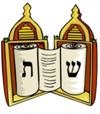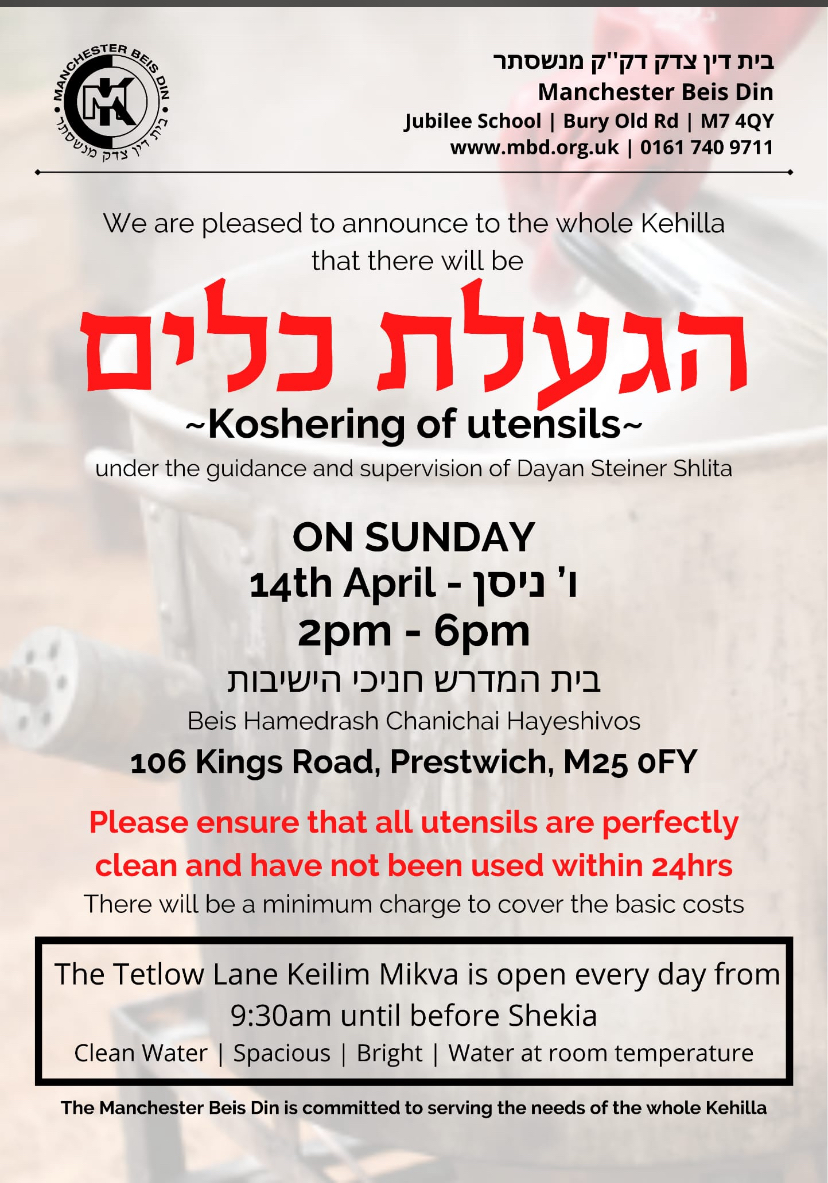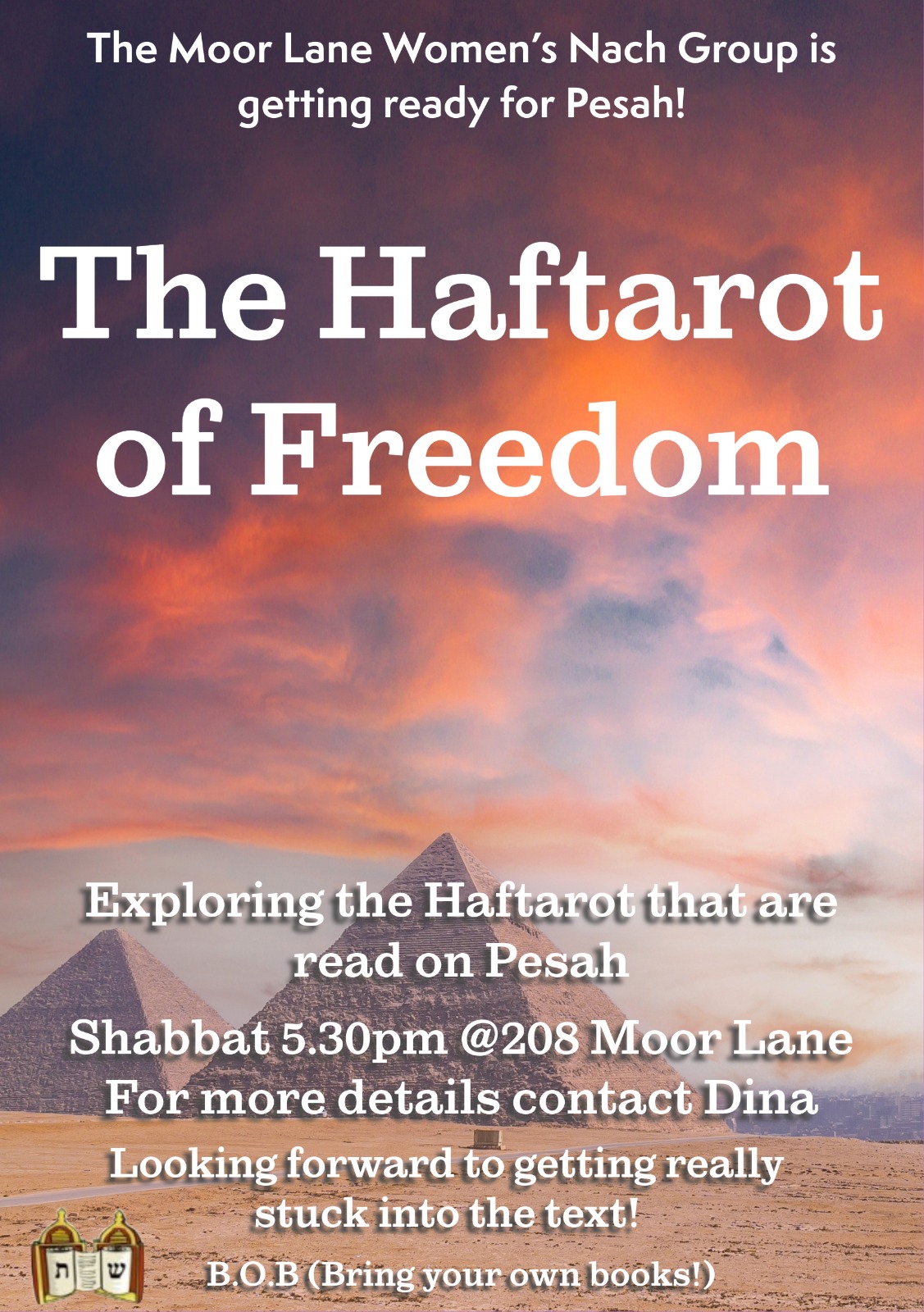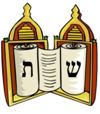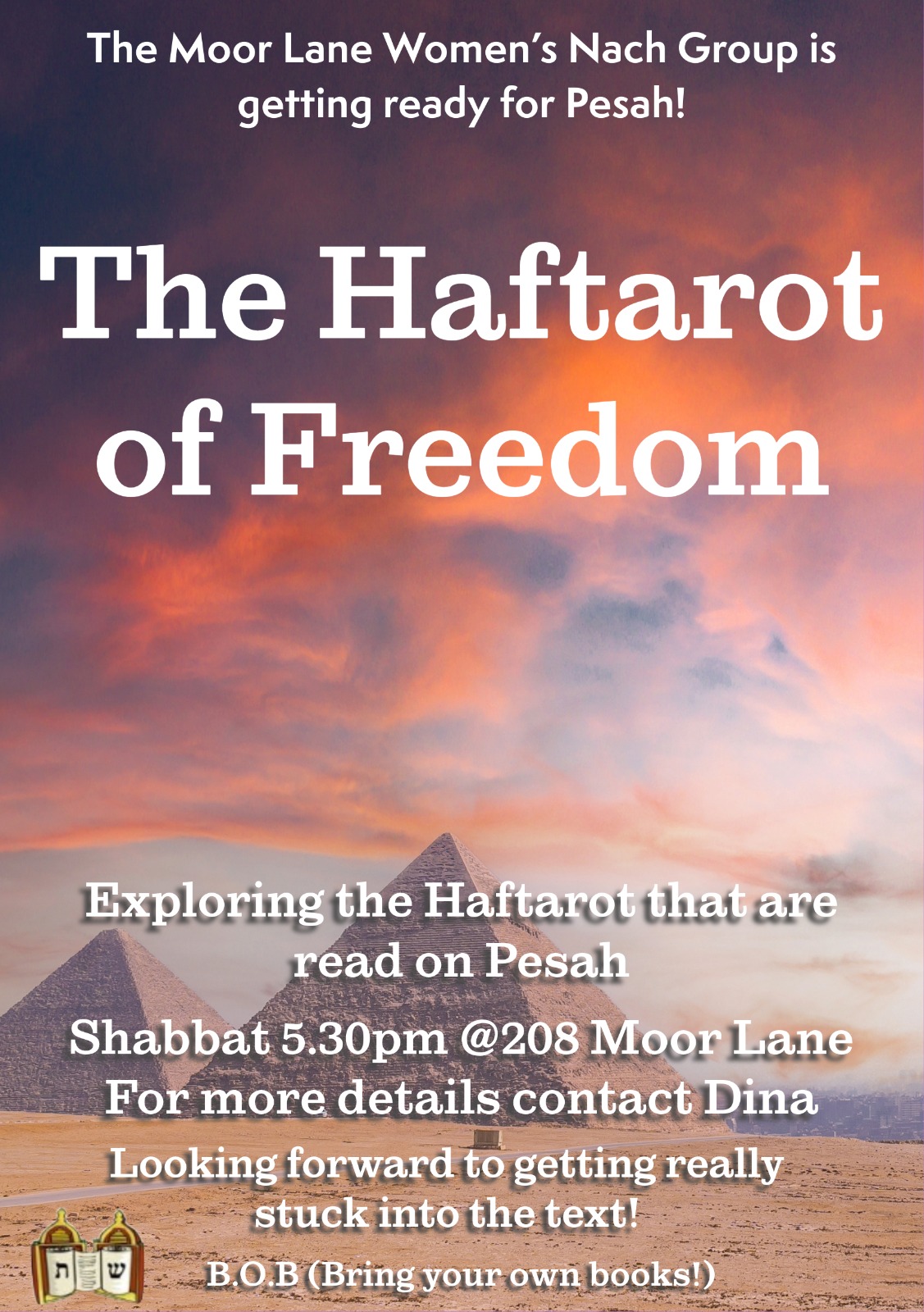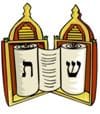
ק׳ ק׳ שׁערי תפילה

*******







Shabbat Hagadol
The Shabbat before Pesach is called “Shabbat
Hagadol,” or “the Great Shabbat,” a term that is generally
understood as a reference to the miracle that occurred in Egypt on the Shabbat
before Benei Yisrael's departure from Egypt. It was on that Shabbat, which fell
on the tenth of Nissan, that Benei Yisrael designated sheep for the Korban
Pesach (paschal offering) and tied them to their bedposts. The Egyptians
inquired as to the purpose behind this designation of sheep, which the
Egyptians worshipped as a pagan deity, and Benei Yisrael explained that they
prepared the sheep for a sacrificial offering to God. Despite this grave insult
to their deity, the Egyptians were powerless to oppose Benei Yisrael. They were
miraculously struck by a disease that required them to regularly visit the
restroom, thus impairing their ability to cause any harm to Benei Yisrael.
In commemoration of this great miracle that occurred on the Shabbat before
Pesach on the year when Benei Yisrael left Egypt, we observe this Shabbat as a
special occasion and refer to it as “Shabbat Hagadol.”
Some have raised the question as to why we commemorate this miracle
specifically on the Shabbat before Pesach, rather than on the calendar date
when this miracle occurred – the tenth of Nissan. Why don't we observe a
commemoration on this date regardless of the day of week on which it falls?
One answer suggests that it was specifically due to Benei Yisrael's observance
of Shabbat that the greatness of this miracle was felt. When they told the
Egyptians on that day of their plans to slaughter the sheep as a sacrifice, the
Egyptians believed them despite the fact that they did not slaughter the sheep
that day, because they understood that Benei Yisrael would not kill animals on
Shabbat. On the subsequent days, however, when the Egyptians saw that Benei
Yisrael were not yet slaughtering the sheep, they began to suspect that they
were bluffing all along. It was thus specifically on Shabbat when the Egyptians
sought to foil Benei Yisrael's plans but were miraculously prevented from doing
so, and for this reason we commemorate this miracle specifically on the Shabbat
before Pesach.
Others explain that the tenth of Nissan marks yet another great miracle in
Jewish history – the splitting of the Jordan River when Benei Yisrael entered
the Land of Israel, as recorded in the Book of Yehoshua (chapter 3). In order
to make it clear that we commemorate the miracle in Egypt, and not the
splitting of the Jordan, we observe our commemoration on the Shabbat before
Pesach, rather than on the calendar date of the tenth of Nissan.
The Chid”a (Rabbi Chayim Yosef David Azulai, 1724-1806) writes that on
this Shabbat people should extend to one another the greeting, “Shabbat
Hagadol Shalom” and then respond, “Shabbat Hagadol Shalom
U'mevorach.”
There is a widespread custom for the Grand Rabbi of the congregation to deliver
on this Shabbat a special Derasha (lecture) devoted to the laws of Pesach and
discussions of the Haggada in preparation for the holiday. This is another
reason for calling this Shabbat “Shabbat Hagadol,” which perhaps
means, “the Shabbat of the great person,” referring to the Grand
Rabbi. Additionally, the Derasha delivered on Shabbat Hagadol is typically
lengthier than the Rabbi's usual lecture. (The late Chief Rabbi of the
Sephardic Community in Brooklyn, Chacham Yaakov Kassin A”H, would deliver his
Derasha on Shabbat Hagadol in Congregation Shaare Zion for several hours before
Mincha.) The term “Shabbat Hagadol” may thus refer to the
“great,” or long, lecture that the Rabbi delivers on this Shabbat.
Some Ashkenazim have the practice of reciting the Maggid section of the Haggada
on Shabbat Hagadol, in order to familiarize themselves with the Haggada in
preparation for the Seder. The Gaon of Vilna (Rabbi Eliyahu of Vilna,
1720-1797) opposed this practice, in light of the emphasis made in the Haggada
itself that the obligation to tell the story of the Exodus applies only on the
night of Pesach (“Lo Amarti Ela Be'sha'a She'yeish Matza U'marror Munachim
Lefanecha”). In any event, even for those of us who do not actually recite
the Haggada on Shabbat Hagadol, this Shabbat is an appropriate time to begin
reviewing the Haggada and prepare material for the Seder
The Significance of Shabbat Hagadol
Maran, in Shulhan Aruch, discusses the special
Shabbatot that precede Pesah and the various Halachot that apply on those days.
On Shabbat Shekalim, we take out an extra Sefer Torah and read the section of
Shekalim, just as on Shabbat Zachor, the Shabbat before Purim, we read the
section of Zachor, and we read special portions from the Torah on Shabbat Para
and Shabbat Ha’hodesh. Interestingly, however, Maran also makes mention of the
Shabbat immediately preceding Pesah, which is called Shabbat Hagadol (“The
Great Shabbat”) because of the miracle that occurred on this Shabbat. Maran
makes mention of this Shabbat, even though there are no specific Halachot
associated with this Shabbat. There is no special reading from the Sefer Torah
on this Shabbat, and there are no special prayers, and yet Maran made a point
of mentioning in his Halachic code that this Shabbat is special and is called
Shabbat Hagadol.
It is true that there are several customs observed by some communities on this
Shabbat. For example, many synagogues read a special Haftara on this Shabbat,
but this is not required according to the strict Halacha. Some Ashkenazim read
portions of the Haggadah on Shabbat Hagadol, but this, too, is just a custom,
and in fact the Vilna Gaon (Rabbi Eliyahu of Vilna, 1720-1797) was opposed to
the practice.
The Hida (Rav Haim Yosef David Azulai, 1724-1807) suggested that perhaps the
Halachic implications of the status of Shabbat Hagadol relates to greetings
extended to one another on this Shabbat. Instead of greeting one another with
the usual greeting of “Shabbat Shalom,” the Hida suggested that perhaps one
should instead extend the greeting, “Shabbat Hagadol Shalom,” and the other
should then respond, “Shabbat Hagadol Shalom U’meborach.” Still, it remains
unclear why Maran would make a point of mentioning Shabbat Hagadol if there are
no actual Halachot that apply on this Shabbat.
Former Chief Rabbi Eliyahu Bakshi-Doron, in his work Binyan Ab, suggested that
the practical significance of Shabbat Hagadol lies in the perspective it gives
us on the preparations for Pesah. On the Shabbat before the Exodus, which was
the 10th of Nissan, Beneh Yisrael were instructed to prepare a sheep for the
Korban Pesah (paschal sacrifice) which was slaughtered four days later, on the
14th of Nissan. In full view of the Egyptians, who worshipped sheep as an Aboda
Zara, Beneh Yisrael took a lamb and tied it to their bedpost, and they even
explained to the Egyptians what they were doing, that this animal would be
sacrificed to G-d. The Egyptians wanted to kill the people for desecrating
their deity, but G-d performed a miracle and made them powerless to cause Beneh
Yisrael any harm.
Rav Bakshi-Doron noted that this miracle differed fundamentally from the ten
plagues. The ten plagues were brought directly by G-d, whereas the miracle of
Shabbat Hagadol came about through the people’s courage. It was through their
preparations for the Misva that a miracle happened. And the fact that G-d
performed a miracle during the preparation for the Misva, four days before the
actual performance of the Misva, is very significant. It demonstrates that even
the preparatory stages have great value; that even the work we do in
preparation for a Misva is laden with significance. And thus Maran made mention
of Shabbat Hagadol in Shulhan Aruch, to teach us the importance of preparing
for Pesah, by learning and teaching the Halachot and putting ourselves in the
proper frame of mind for the holiday. The miracle of Shabbat Hagadol teaches us
that it is not only the Misva itself that has value, but also the work we
invest beforehand preparing ourselves for the performance of the Misva.
לוח זמני תפלה לחורף תשפ״ד
מוצאי שבת | ערבית )מוצ“ש( | מנחה | סוף זמן קריאת שמע | זמן שבת | פלג המנחה (תה״ד) | פלג המנחה (לבוש) | מנחה וקבלת שבת | תאריך | שבת פרשת |
Shabbat Ends | Arbit | Mincha | Shema before | Latest Candle lighting |
| Earliest Candle lighting | Mincha & Kabbalat Shabbat | Date | Parasha |
PM | PM | PM | AM | PM | PM | PM | PM |
|
|
9:15 | 9:11 | 6:30 | 9:32 | 8:03 | 7:22 | 6:49 | 7:00 | 19/20 Apr | מצורע (שבת הגדול) |
שבת
קרבנות
9:00 am
הודו
9:15 am
מנחה
6:30 pm
******
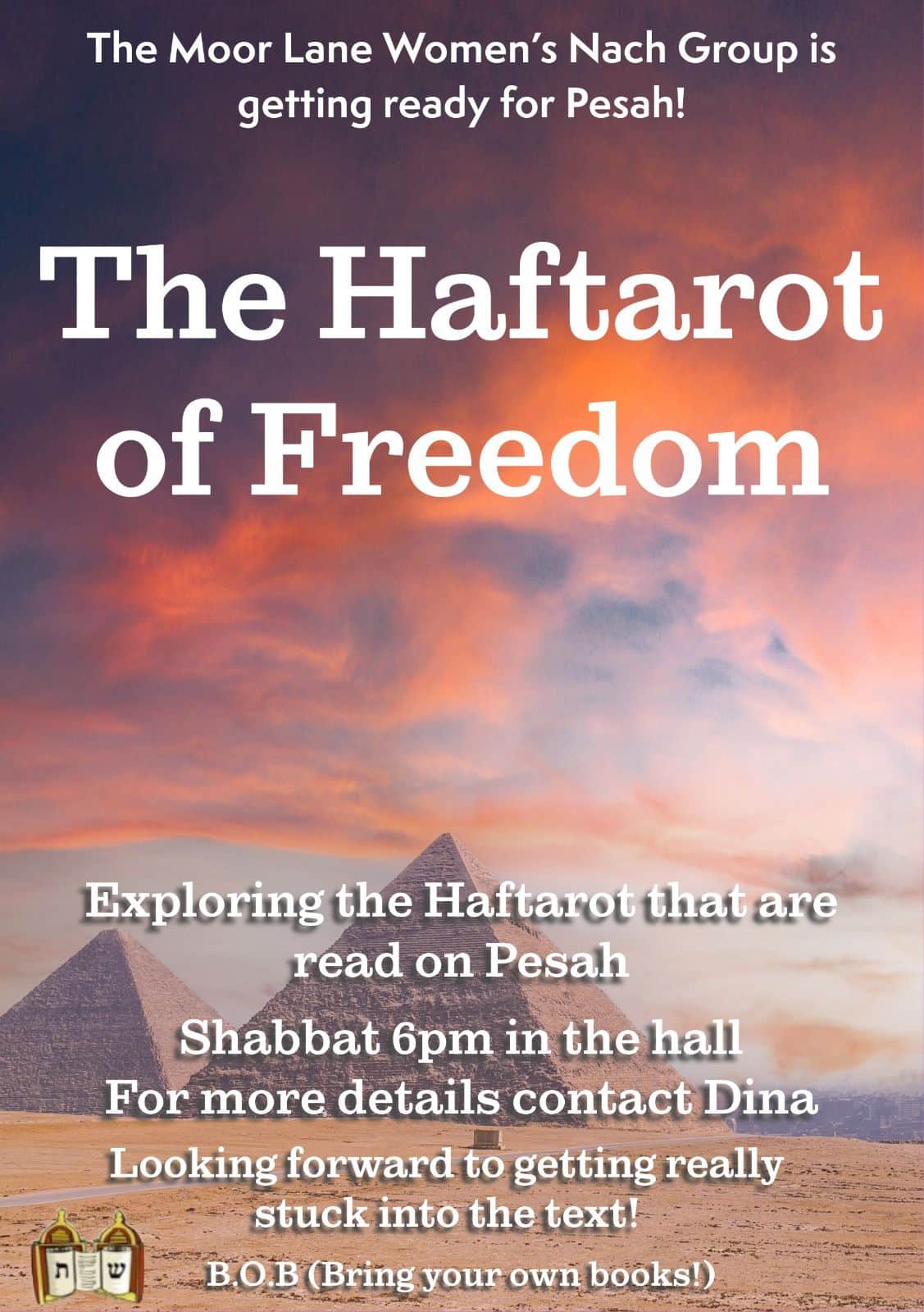
*****
The Torah describes the procedure for a metzora (a person afflicted with tzara'at) upon the conclusion of his isolation period. This process extends for a week and involves korbanot and immersions in the mikveh. Then, a kohen must pronounce the metzora pure. A metzora of limited financial means may substitute lesser offerings for the more expensive animals. Before a kohen diagnoses that a house has tzara'at, household possessions are removed to prevent them from also being declared ritually impure. The tzara'at is removed by smashing and rebuilding that section of the house. If the tzara’at signs reappear, the entire building must be razed. The Torah details which bodily secretions render a person spiritually impure, and thereby prevent his contact with holy items. And the Torah defines how one regains a state of ritual purity.
Ohr Somayach Institutions www.ohr.edu

שאלה: כמה שיעורי “כזית” מצה צריך לאכול בליל פסח? – ותוספת בעקבות המצב הבטחוני המתוח בארץ ישראל
בעקבות המצב הבטחוני המתוח בארץ ישראל, עלינו לזכור, כי אף שאין אנו יודעים לאן הדברים מוליכים אותנו, בכל זאת אי אפשר להתעלם מכך שניכרים כאן אותות של חבלי משיח, ועלינו להתחזק ביתר שאת בלימוד תורה ובתפילה, על כלל ישראל, ועל שלומם של חיילי ישראל, ועל טובת כלל ישראל, שה' יתברך יחבב את עמו, וישיבם בתשובה שלימה בשובה ונחת, ויציל את ישראל מכל אויביהם מבית ומחוץ. גם יש להתחזק בבטחון בה' יתברך, כי הכל מידו, ולב מלכים ושרים ביד ה', והכל יהיה בעזרת ה' לטובה ולברכה, ונזכה לראות בגאולה השלימה במהרה בימינו. בניסן נגאלו ובניסן עתידים להגאל. אמן כן יהי רצון.
* * * * * * * * * * * * * * *
תשובה: בליל הסדר חובה לאכול סך הכל שלשה שיעורי “כזית” של מצה. וכל כזית הוא שיעור של קרוב לשלשים גרם מצה. ומכל מקום יש מקום להחמיר לאכול ארבעה שיעורים של מצה, או חמישה, כמו שנבאר.
בקערת ליל הסדר מניחים שלוש מצות, וכשמגיעים בסדר ליל פסח ל”יחץ“, לוקח בעל הבית את המצה האמצעית מבין השלוש, ובוצע אותה לשתי חתיכות. ומניח את החלק הקטן בין שתי המצות, ואת החלק הגדול נותן לאחד מבני הבית שישמור אותה ל”אפיקומן”. כמו שיבואר.
נמצא שבעל הבית אוכל שני שיעורי כזית כבר באכילה זו. אחד מן המצה העליונה ואחד מן המצה האמצעית. אבל שאר בני הבית, שאין להם מספיק לאכול שני שעורים ממצות אלו שבידיו של בעל הבית, נותן להם בעל הבית מעט מכל מצה, ומצרף להם ממצות אחרות הנמצאות איתו עד שיגיעו לשיעור כזית אחד. ודי להם לכל הדעות בשיעור כזית אחד בלבד. נמצא כי שאר בני הבית אינם אוכלים באכילה זו אלא כשיעור כזית אחד בלבד. וגם בעל הבית אם מאיזו סיבה לא אכל שיעור של פעמיים כזית, יצא בדיעבד ידי חובתו. ולקוצר הזמן לא נוכל להרחיב את הדיבור ולהסביר את טעמי דין זה.
ויש מחמירים לאכול כ”צפון” כשיעור שני זיתים, אחד זכר לקרבן פסח ואחד זכר למצה שהיו אוכלים עם קרבן פסח. נמצא שבעל הבית עד כאן אכל חמישה שיעורי כזית אם הוא מחמיר על עצמו, ואם לאו אינו אוכל אלא שיעור ארבע זיתים. ושאר בני הבית אוכלים ארבע זיתים אם הם מחמירים על עצמם, ואם לאו, אינם אוכלים אלא שיעור של שלשה זיתים.
ולסיכום: ב”מוציא מצה” אוכל בעל הבית שיעור כשני זיתים של מצה. ושאר בני הבית שאינם אוכלים מן המצה של בעל הבית אוכלים כזית אחת. וב”כורך” אוכל כל אחד כזית מצה. ומ”צפון” אוכל כל אחד כזית אחד, ויש מחמירים לאכול שיעור של שני זיתים מצה.
Question: How many “Kezayit”s (olive’s volume) of Matzah must one consume during the Pesach Seder? – And Important Clarification
Important Clarification: In last Thursday’s Halacha regarding sensitivities to Matzah, we had written that spelt and oat Matzah are acceptable for people who suffer such sensitivities. We did not mean that those suffering from Celiac disease should consume spelt Matzah, as that would be physically damaging to them. Rather, we meant that for those with certain sensitivities to wheat, such as gluten content or gastrointestinal discomfort, sometimes, spelt can have a lower gluten content and may be a better choice and more agreeable to their system (and, in any event, is halachically acceptable). It goes without saying that actual Celiacs should only consume oat Matzah, which is equally acceptable.
Question: How many “Kezayit”s (olive’s volume) of Matzah must one consume during the Pesach Seder?
Answer: One is obligated to eat altogether three “Kezayit”s of Matzah during the Pesach Seder. Every Kezayit amounts to approx. thirty grams of Matzah. Nevertheless, there is room for stringency to eat four or even five “Kezayit”s of Matzah, as we shall now explain.
The Order of the Seder Night
The order for the night of Pesach established by the great and holy Rashi, which we have already discussed, is as follows: Kadesh, Urchatz, Karpas, Yachatz, Magid, Rochtza, Motzi, Matzah, Maror, Korech, Shulchan Orech, Tzafun, Barech, Hallel, Nirtzah.
Three Matzot are placed on top of the Seder plate. Upon reaching the part of the Seder entitled, “Yachatz,” the head of the household takes the middle Matzah and splits it into two pieces. He keeps the smaller of the two pieces and the larger of the two pieces is kept for the “Afikomen.”
The First Kezayit
Upon reaching the part of the Seder entitled, “Motzi-Matzah,” the head of the household takes the three Matzot already prepared on the Seder plate. The top and bottom Matzot are whole, and the middle Matzah is the one which was broken in half during “Yachatz.” He holds these Matzot in his hands and proceeds to recite the blessing of “Hamotzi Lechem Min Ha’aretz” followed by the blessing of “Al Achilat Matzah.” It is customary that after one recites the blessing of “Hamotzi,” one lets go of the bottom Matzah and continues to recite “Al Achilat Matzah” while holding only the top whole Matzah and the middle split Matzah. The head of the household must then eat a Kezayit of each Matzah.
Thus far, the head of the household will have already eaten two “Kezayit”s during this part of the Seder. However, the other members of the household, who do not have enough to eat two “Kezayit”s from the Matzot of the head of the household should be given a small piece of the head of the household’s Matzah and he will then supplement that with other Matzot that he has until it reaches the amount of a Kezayit. Regarding the members of the household who do not eat a Kezayit from the head of the household’s Matzot, they do not need to be eating two “Kezayit”s; rather, one Kezayit is sufficient according to all opinions. It turns out that the other members of the household (excluding the head of the household) are only eating one Kezayit at this point in the Seder. Even if the head of the household, for whatever reason, did not eat his allotted two “Kezayit”s and has only eaten one Kezayit, he has fulfilled his obligation. Due to time constraints, we will not be able to elaborate on the reasons behind this law any further.
The Second Kezayit
Afterwards, upon reaching the part of the Seder entitled, “Korech,” one takes a Kezayit from the third Matzah on the Seder plate and wraps a Kezayit of Maror in it and then he dips it in Charoset, after which one recites, “Zecher La’Mikdash Ke’Hillel,” and then eats this while leaning on one’s left side. At this point, the head of the household has eaten three “Kezayit”s of Matzah and the rest of the members of the household have eaten only two “Kezayit”s.
The Third Kezayit
Upon reaching the part of the Seder entitled, “Tzafun,” which is after concluding the festive meal, the Matzah hidden under the tablecloth is eaten as the “Afikomen” and another Kezayit must be eaten from this Matzah. (For the other family members, the Seder leader hands out other Matzot in addition to a small piece of the designated “Afikomen” Matzah.) One must be careful to eat this Matzah while leaning as well, for if one did not, one has not fulfilled one’s obligation and will need to eat another Kezayit of Matzah while leaning. This may very well lead to a point of excessive eating which can also be a cause of not fulfilling this Mitzvah, as we have already explained.
Some act stringently and eat two “Kezayit”s during “Tzafun,” one in commemoration of the Pesach offering and one in commemoration of the Matzah that was eaten with it. At this point, the head of the household will have eaten five “Kezayit”s of Matzah if he acts more stringently, and if not, he will only haven eaten four. The other members of the household will have eaten four “Kezayit”s if they act more stringently, and if they not, they will have only eaten three.
